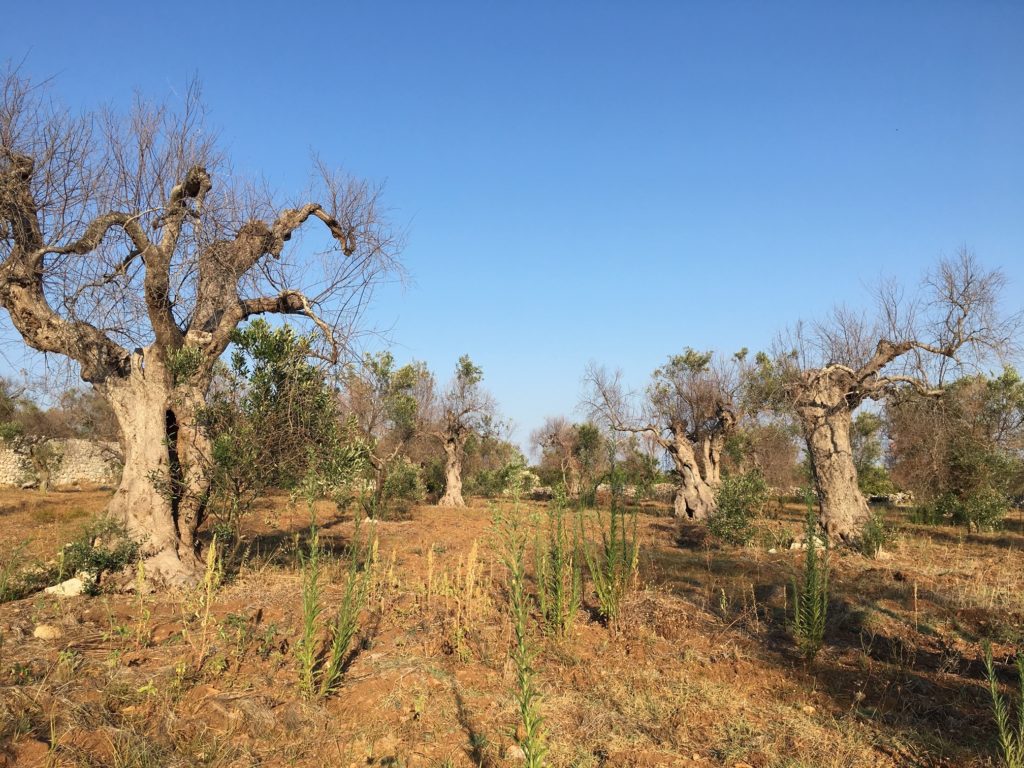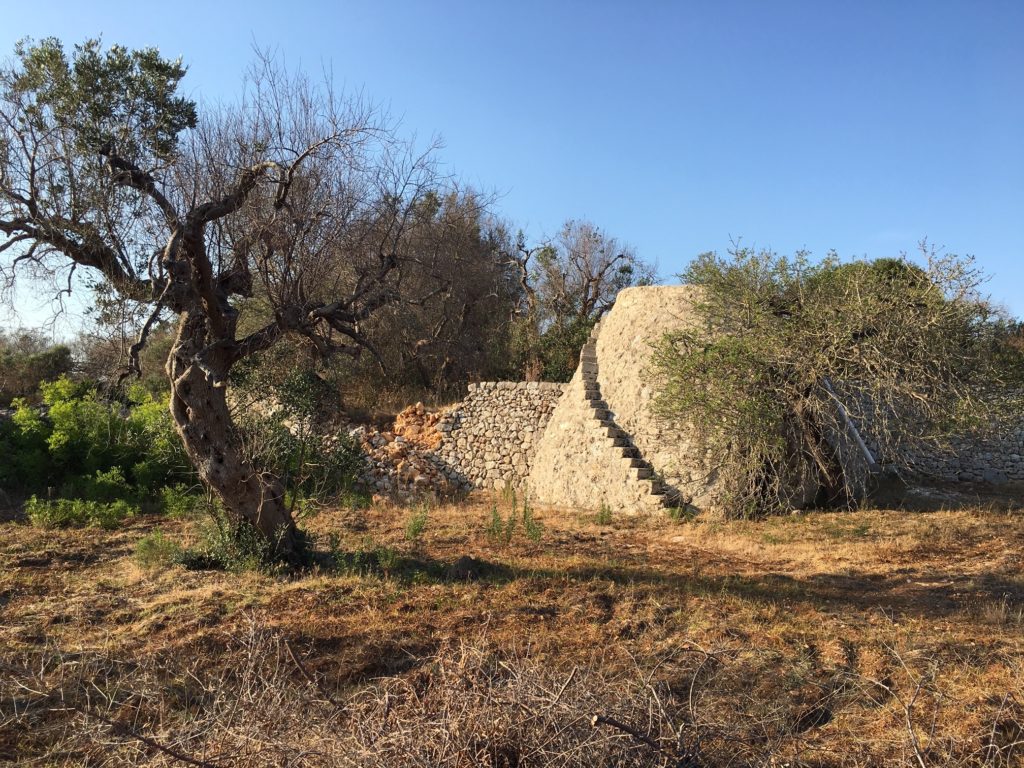In Apulia (ital. Puglia), a region in the far south of the Italian Peninsula, the cultivation of olive trees to produce olive oil is an agricultural tradition that goes back thousands of years. In the hills outside the sea town of Santa Maria di Leuca, the landscape is dominated by olive groves. Local families own these olive groves, the oil is mostly used for their own consumption or to gain a small additional income, but large-scale production of olive oil is the exemption in this area. The traditional agricultural landscape includes dry stone walls that mark the limits of the family properties, and typical stone huts called “Pajara” (which are similar to the more famous trulli but without their conical roof), used for the storage of agricultural tools.

However, since 2013, a new plant disease called Olive quick decline syndrome has heavily affected the olive trees. The disease is caused by a bacterium, Xylella fastidiosa, which is transmitted by small insects. The bacterial infection limits the olive tree’s ability to move water and nutrients, and over time the trees withers and dies. Millions of olive trees in Apulia have died, and in many cases, the olive groves area abandoned. Universities and research institutes are actively searching for Xylella resistant or at least tolerant olive varieties, and some farmers in Apulia attempt to replant their groves with new trees. In the long-term, resistant cultivars is the most promising, and environmentally most sustainable strategy.

Paisaia European Landscape Foundation has started working with a local family and is investigating ways to rescue some parts of this unique traditional agricultural landscape, while conserving Pajara and dry stone walls at the same time.
Photos: Copyright Thomas Abeli, with kind permission.